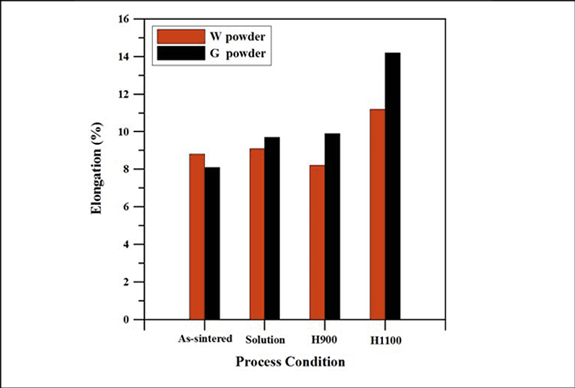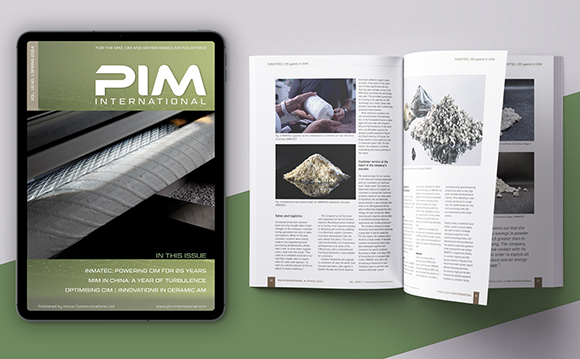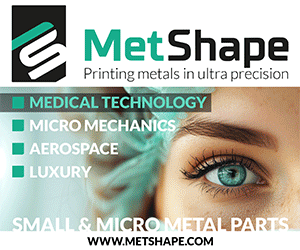Study compares properties of water and gas atomised 17-4PH stainless steel for MIM
December 2, 2015
17-4PH (precipitation hardening grade) stainless steels are one of the most popular materials used in MIM, offering superior mechanical properties and corrosion performance. This grade of stainless steel is also magnetic and hardenable to various strength levels by varying the aging heat treatment temperature. Ming-Wei Wu at the National Taiwan Institute of Technology and fellow researchers from the National Formosa University, Taiwan and National University Taiwan, have reported on the results of a study, published in Metals and Materials International (Vol. 21, No. 3, May 2015, pp 531-537) to compare the as-sintered and heat treated properties of both water atomised and gas atomised 17-4PH stainless steel powders. The paper, “Microstructures, Mechanical Properties, and Fracture Behaviors of Metal Injection Molded 17-4PH Stainless Steel” focussed in particular on the influence of powder type on various heat treatments (sintering, solutioning, H900, and H1100) on microstructure and mechanical properties. The role of δ ferrite on the fracture behaviour of MIM 17-4PH stainless steels was also examined.
The two grades of 17-4PH stainless steel had a median particle size of 10.3 µm for water atomised (W) powder and 12.0 µm for gas atomised (G) powder. The researchers stated that the minor difference in particle size and size distribution was not expected to play an important role in the densification process and that the properties would be influenced more by the lower silicon and oxygen content and fewer SiO2 inclusions in the gas atomised grade.
The two grades of 17-4PH stainless steel powders were kneaded with 7 wt% wax-based binder, comprising paraffin wax, stearic acid and polyethylene and the resultant feedstock injected moulded as per MPIF Standard 50. The organic binder was removed first by immersion in heptane at 45°C for 8 hrs, followed by thermal debinding at 500°C for 2 hrs in a tube furnace under hydrogen. The debound parts were then pre-sintered at 1000°C and final sintering took place at 1350°C in a vacuum furnace under partial pressure of argon of around 500 Pa. The sintered density of W and G grades were 7.58 and 7.66 g/cm3 respectively.
The reason for the lower sintered density in the W grade is said to be the presence of 1.2 vol% SiO2 which decreased the theoretical density of MIM 17-4PH from 7.80 to 7.73 g/cm3 . The microstructures of as-sintered and heat treated parts consisted of martensite and δ ferrite, irrespective of the powder grade, with the fraction of δ ferrite not found to affect final sintered density.
The authors showed that better mechanical properties of MIM 17-4PH stainless steel can be achieved with gas atomised powder than with water atomised powder due mainly to the lower silicon and oxygen contents and fewer SiO2 inclusions in the gas atomised stainless steels. The H900 heat treated 17-4 PH specimens produced the highest hardness (HRC) and ultimate tensile strength (UTS), along with moderate elongation of greater than 8%. These values are higher than those specified in the MPIF Standard. However, H1100 heat treatment produces the best elongation at over 11% (Fig. 1), along with moderate hardness and UTS. This clearly shows that higher property values can be achieved with the gas atomised powder grade. The presence of 10 vol% δ ferrite was found not to impair the UTS or elongation of MIM 17-4PH stainless steels. The δ ferrite did not fracture, even though the neighbouring martensitic matrix was severely cracked.


















